
Category: Violin and Other Strings
Brahms: Violin Concerto; Sergey Khachatryan, Frankfurt Radio Symphony, Andrés Orozco-Estrada
Courtesy of frequent Audio Asylum classical bulletin-board poster Todd Krieger, here’s an outstanding Brahms violin concerto from a violinist I had been unaware of, Sergey Khachatryan. I should not have been unaware, in that Sergey Khachatryan was awarded first prize at Belgium’s Queen Elizabeth Competition in 2005.
This performance is full of depth, nuance, subtlety, and grace! And the conductor and the orchestra are completely on board with all that. In particular, the dynamic shadings of the interplay between soloist and orchestra are such a revelation. Phrasing is also blessed with such innigkeit. And Khachatryan has amazing technical resources. But exactly which kind of demands this concerto makes upon technical (and musical) resources, I offer an opinion on, after the jump.
Bavarian Broadcasting “BR-Klassik” Internet Radio
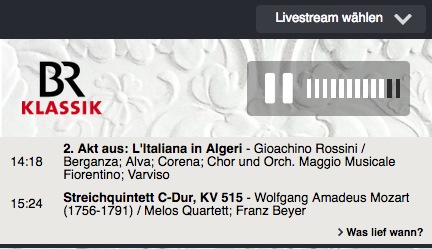
I don’t understand much spoken German at all. So it might be surprising that my favorite classical-music internet radio station is Bavarian Broadcasting’s BR-Klassik channel.
The reason is simple. BR-Klassik’s programming is unusually diverse, and therefore more interesting to me. To tune into the “br.de” streaming service, all you have to do is click here: https://www.br.de/index.html. Once you are on the home page, scroll down to here:

And click on the tile with the BR-Klassik logo. A player window will open that connects you to the classical-music channel. Bavarian households pay about $250 a year for public broadcasting, but now you are getting it for free!
More commentary from me, after the jump. Continue Reading →
Julian Bream: Nocturnal After John Dowland (conclusion) (Benjamin Britten, op. 70)
Julian Bream (who died today, age 87, in Wiltshire, England) grew up in a musical household, and certainly made the most of it. His father, a commercial artist, was a jazz guitarist who also played the piano. As a child, the young Julian would sit by the radio, trying to strum along on his father’s guitar. Lessons followed on both guitar and piano. Winning a piano competition at age 12 gave Julian entry into the Royal College of Music. He made his début recital on the guitar at age 13, and made his Wigmore Hall début at age 17. His father bought him a lute, which he taught himself to play. In 1960, he founded an original-instruments group with himself as lutenist, bringing Elizabethan music to widespread public awareness. England’s most important composers, Benjamin Britten, Sir William Walton, and Sir Michael Tippett wrote pieces for him, as did dozens of other composers.
Here he is in a video from 2003 (I believe), playing the penultimate and final movements of Britten’s Nocturnal after John Dowland. Britten’s Nocturnal is not so much a set of variations as an 18-minute reconstruction of a deconstructed “Come, Heavy Sleep,” by John Dowland.
In sharp contrast to the usual variation sets that start with the melody and get more complicated as they go on, Britten inverted that agenda. The piece starts with the variation most remote in character; each successive variation is closer to the original tune, and the work ends with Dowland’s original lute song (which was published in 1597). So, here we have the final variation, and then the statement of the melody.
There were giants in the earth in those days…
# # #
Rosen, Stevenson, and Delmoni: “Londonderry Air” (arr. Fritz Kreisler)
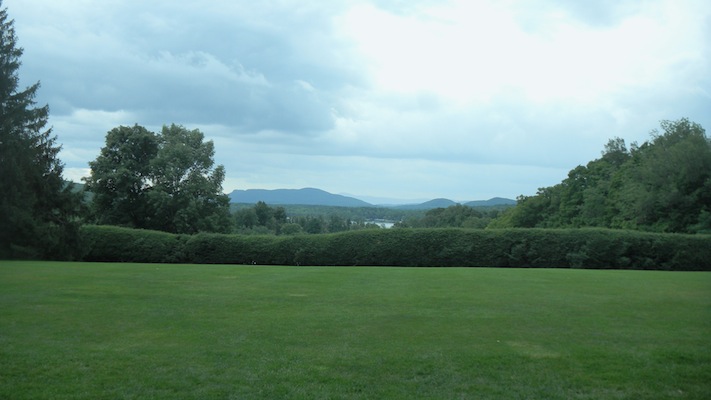 Photo by John Marks
Photo by John Marks
The above photo was not taken in Ireland, but it perhaps could pass; and in any event, it will have to do.
For St. Patrick’s Day, here are Nathaniel Rosen (cellist), Doris Stevenson (pianist), and Arturo Delmoni (guest violinist) playing Fritz Kreisler’s trio arrangement of “Londonderry Air,” also known as “Danny Boy.”
Rosen, Stevenson, and Delmoni: “Londonderry Air” (arr. Fritz Kreisler)
That track is from the 2-LP set Orientale, which was released on North Star Records in 1991. The project was my idea. I obsessively mother-henned the thing from soup to nuts, from concept to the sessions at Holy Trinity Church (David Hancock recorded), to the art-quality printing on the fabricated jackets, to the vellum paper for the signed numbered certificates. (Orientale on LP was a signed numbered limited edition of 2,000 2-LP sets.)
I find it gratifying that nearly 30 years later, Orientale 2-LP sets regularly sell between $300 and $500 on the used market. The top sale is $600 for a claimed sealed set. There is one set for sale now, at $549.99. The musicianship is otherworldly, captured in a David Hancock 30 ips two-track recording using Cambridge ribbon microphones. Doug Sax mastered it; he told me that the Tchaikovsky piece had made him want to “jump over the console.” I took that to mean that he liked it.
# # #
Q & A with Karen Gomyo
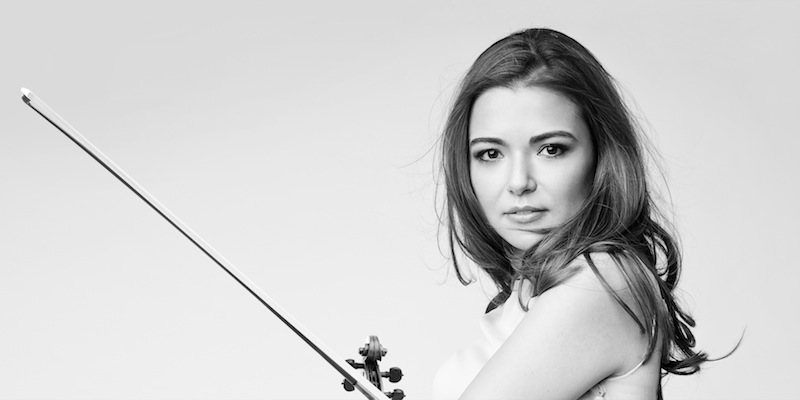
Karen Gomyo was born in Tokyo, but grew up in Montréal. That is, up to the point when, at age 10, she moved to New York City, in order to study at the Juilliard School, at the invitation of Dorothy DeLay. Miss DeLay taught, among many others, my friends Arturo Delmoni and David Kim. Indeed, it’s the rare household-name violinist of the last 50 years whom Miss DeLay did not teach.
Miss Gomyo continued her studies at the Indiana University Jacobs School of Music (yay!) and the New England Conservatory. Apart from Miss DeLay, her teachers included Mauricio Fuks, Donald Weilerstein, and cellist Heinrich Schiff.
In addition to the standard concert repertoire, Miss Gomyo has a great affinity for the music of Astor Piazzolla, and has performed with the late Piazzolla’s former colleagues Pablo Ziegler (whose solo recording on the Steinway & Sons label can be heard here), Hector del Curto (bandoneon), Claudio Ragazzi (electric guitar), and Pedro Giraudo (double bass).
Miss Gomyo has followed up her recording of the Bo Linde violin concerto with an SACD of music for the wonderful combination of violin and classical guitar, which I reviewed last post. Questions and answers after the jump. Continue Reading →
Karen Gomyo and Ismo Eskelinen: Carnival (music for violin and guitar) (SACD)
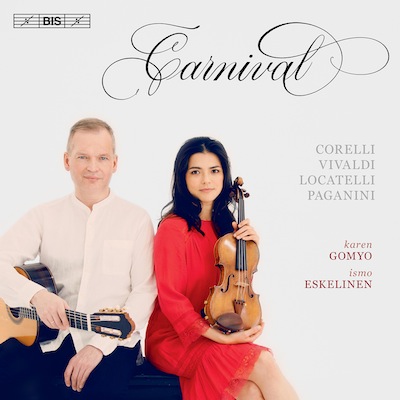
Karen Gomyo and Ismo Eskelinen: Carnival
Music for violin and guitar of Corelli, Vivaldi, Locatelli, and Paganini.
SACD (BIS 1998) and MP3 downloads available from Amazon
Hi-Res downloads (24-bit/96kHz stereo AIFF, ALAC, FLAC, and WAV) available from e-classical and HDTracks
Streaming available from Tidal (and others)
Release date: November 1, 2019
Recorded September 2015 at Troy Savings Bank Music Hall, New York. Producer and recording engineer: Hans Kipfer (Take5 Music Production). Violin by Antonio Stradivari, the ‘Aurora’ (1703); bow by François Tourte (c. 1810); Guitar by Gabriele Lodi (2011). Total time 67 min. 30 sec.
It used to be that only hard-core violin nerds were aware that legendary violinist Niccolò Paganini (1782-1840) played the classical guitar, or that he also composed a substantial body of works for that instrument. Superb recordings such as this one can only increase recognition of that intriguing fact.
This recording places works by Paganini (and a selection of his “Carnival of Venice” variations, with the addition of a new variation by Miss Gomyo) in the context of earlier works by Paganini’s violinist/composer predecessors Corelli, Vivaldi, and Locatelli, who were born in 1653, 1678, and 1695, respectively.
For the earlier Baroque sonatas, the guitarist on this recording, Ismo Eskelinen, created guitar parts from the original basso-continuo parts. But even in the Baroque era, the guitar’s predecessor the lute was a continuo instrument as well as a solo instrument (and also the instrument in the duo genre known as the “lute song”).
For those of us who remember the dawn of the CD medium (I was the founding classical-music columnist of Digital Audio magazine, which was later rebranded as CD Review), mention of the recording venue for this recording should bring a flood of warm memories. The venue for this project was Troy, New York’s Troy Savings Bank Music Hall, which was for many years where Dorian Recordings did most of their work. More information, and sound bytes, after the jump. Continue Reading →
“The Song of Names” (film)
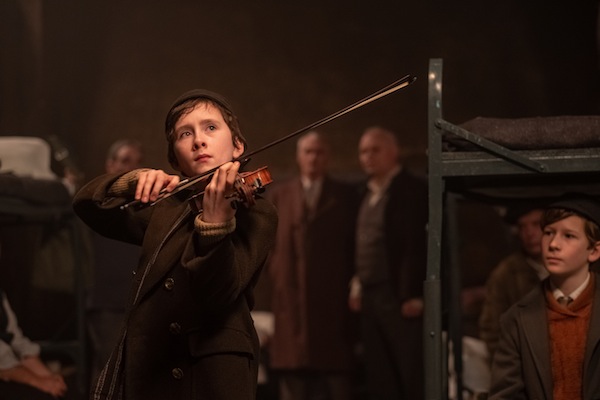
Center: Dovidl (played by Luke Doyle)
© Sabrina Lantos. Courtesy Sony Pictures Classics.
Classical-music fans, especially fans of the violin and its literature, will want to know about the upcoming (opening in selected cities December 25, 2019; nationwide in January) big-screen theatrical release of the film The Song of Names, based on Norman Lebrecht’s prize-winning novel of the same name. The director is François Girard (The Red Violin, Thirty Two Short Films About Glenn Gould); for that reason we can have a high degree of confidence that great care has been taken in getting the musical details right. But all that is not to say that people whose primary musical orientation is other than classical will not also appreciate the film. The plot is compelling, the characters are intriguing, the cinematography is atmospheric, and the film score is by Howard Shore, of Lord of the Rings fame.
Here’s what the film’s US distributor Sony Pictures Classics says about the setup of the film’s action, much of which is told in flashbacks:
Martin Simmonds (Tim Roth) has been haunted throughout his life by the mysterious disappearance of his “brother” and extraordinary best friend, a Polish Jewish virtuoso violinist, Dovidl Rapaport, who vanished shortly before the 1951 London debut concert that would have launched his brilliant career. Thirty-five years later, Martin discovers that Dovidl (Clive Owen) may still be alive, and sets out on an obsessive intercontinental search to find him and learn why he left.
What interests me most, of course, is how successful the production crew has been at allowing the audience to suspend disbelief and accept that the actors on screen are actually playing the violin. Based on what I have seen, I think they have done a very impressive job. Further explanation, the trailer, and a mini-feature on the teenage actor who is also a genuine violin virtuoso, after the jump.
Auner Quartet: Felix Mendelssohn Bartholdy, String Quartet No. 2 in a, Op. 13
The musical form I had the most commercial success in (as a classical-music record producer and label owner), was the string quartet. Granted, my remarkably successful string-quartet recordings consisted of quartet arrangements of sacred and traditional Christmas music. But those recordings are a lot more “classical” in character than “crossover” in character. In other words, no Frosty and no Rudolph. My three original JMR Arturo Delmoni & Friends Rejoice! A String Quartet Christmas CDs have been reissued by Steinway & Sons Recordings as a 3-CD set.
Whatever happens to me from here on out, evidence of my devotion to the string-quartet form will live on. That’s because I am the dedicatee of Morten Lauridsen’s (to-date) sole work in that genre, a transcription for string quartet of his chamber-choir chanson “Contre Qui, Rose.” “Contre Qui, Rose” is one of Lauridsen’s settings of Rainer Maria Rilke’s French-language poems. Lauridsen chose among the Rilke poems that mentioned roses for his 1993 cycle Les Chansons des Roses. The story continues after the jump link. Continue Reading →
Arturo Delmoni Analog Master Tape to Direct Stream Digital (DSD256) Crowdfunding Project
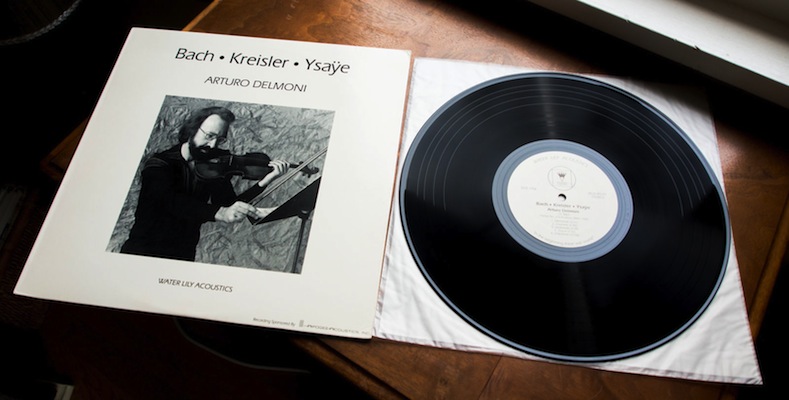 Photo credit: Geoff Zagarola of La Naranja eBay auctions.
Photo credit: Geoff Zagarola of La Naranja eBay auctions.
I find it hard to believe that 2018 marks the 30th anniversary of the recording session for Arturo Delmoni’s legendary 1988 Water Lily solo-violin recital.
Recorded at night in a monastery chapel, Delmoni’s compelling performances combine thrilling technique with thought-provoking musical insights. This minimalist-audiophile, two channels from two microphones, analog-tape and tubed-electronics production remains a reference for the recorded sound of a violin.
The violin in question was made by J. B. Guadagnini in 1780. I am very certain, based on reliable oral-history testimony, that in 1949, Dr. Delmoni’s Guadagnini was played on Charlie Parker with Strings by Max Hollander, the concertmaster of that string section. How about them apples?
The Delmoni-Water Lily project was my idea. I also helped bring it to fruition. And I now own the master tapes… . Therefore, I am not about to argue with eBay seller Bob La Naranja, who wrote of the (used) Delmoni Water Lily LP he recently sold (for more than $100):
Incredible solo-violin renditions of Bach, Kreisler, and Ysaÿe.
Perhaps one of the greatest solo-violin audiophile records—the recording is sublime.
(Except, I might have left out the word “perhaps”… .)
My current project is to arrange for a 11.2mHz/DSD256fs (“Quad DSD”) transfer of the master tapes, selling the download files via an informal crowdfunding venture. How that works, and for more on what all the above means, please click on the jump link, where you will also find generous sound samples. Continue Reading →
Guest Post: An Open Letter to the International Violin Competition of Indianapolis
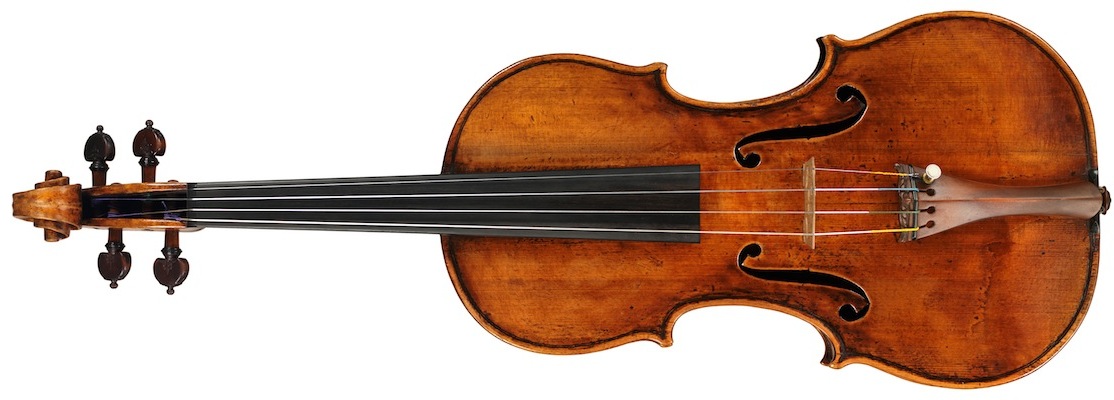
Photo courtesy of Bein & Fushi.
Guest Post:
An Open Letter to “The Indianapolis”
From The Mendtchaik Madman
I am informed via my Internet connection that the International Violin Competition of Indianapolis (heretofore also known as “IVCI”) now wishes to be known as “The Indianapolis.” OK!
One of my mentors in the business of business once told me that the only thing worse than forgetting to listen to the customer was choosing an image makeover instead of improving the product.
Whether the process by which violin competitions turn out their product really needs improving is, without doubt, a matter of dispute. Not too long ago, Norman Lebrecht postulated that unlike piano competitions, violin competitions do not “make stars.”
At the time Mr. Lebrecht’s post went up, I disagreed.
However, now that I have paid close attention to The Indianapolis 2018, I must admit my mistake. The violin-competition system is broken, and it must be taken apart and put back together in a different shape.


